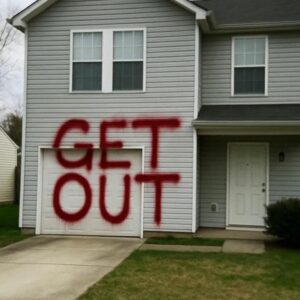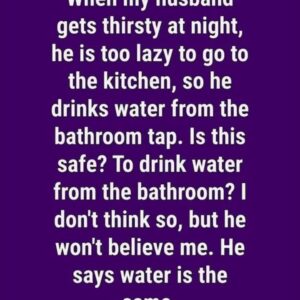Introduction
Have you ever wondered why fast-food restaurants often use bright reds and yellows, while high-end eateries opt for calm, dim lighting and muted tones?
It’s not a coincidence—it’s psychology.


Color, especially background color, plays a powerful role in shaping our eating habits, including how fast we eat and how much we consume. The colors around you while dining can either stimulate your appetite or help you slow down and eat more mindfully. That’s right—your dining room walls, table setting, or even the plate you use could be influencing your portion sizes and eating speed more than you think.
In this article, we’ll explore:
The science of color psychology and appetite
How specific colors influence eating behavior
The best background colors to encourage mindful eating
Which colors may lead to overeating
How to redesign your environment for better portion control
The Psychology of Color and Appetite
Color affects us on a subconscious level. Our brains interpret color as signals that influence emotion, energy, and behavior—including hunger cues.
This is why marketers, interior designers, and even dietitians pay close attention to color choices in food environments.
🔑 Key Concepts:
Warm colors (red, orange, yellow) tend to stimulate appetite and increase eating speed.
Cool colors (blue, green, purple) are more calming, and may suppress appetite or promote slower eating.
Contrast between food and background affects how much you serve yourself. The greater the contrast, the more aware you are of portions.
How Background Color Influences Eating Speed
🔴 1. Red Speeds Up Eating
Red is associated with urgency, stimulation, and intensity—which is why it’s often used in fast food chains.
Red can increase heart rate and stimulate hunger, making people eat faster without thinking.
Faster eating has been linked to reduced satiety awareness, leading to overeating.
🧠 A Cornell University study found that people ate more food in red-themed dining rooms, especially when the lighting was bright.
🟡 2. Yellow Boosts Energy and Snacking
Yellow is often linked to happiness and alertness, but it can also trigger impulsive eating.
It encourages social interaction and short meals, promoting faster eating and more bites.
Yellow dining environments may lead to mindless snacking, especially when combined with red.
🔵 3. Blue Slows Down Eating
Blue is a natural appetite suppressant because it is rarely found in natural foods. Our brains are less stimulated by blue when eating.
Blue background colors encourage slower chewing and more mindful eating.
It also helps regulate portion size awareness, making it ideal for weight-conscious eaters.
💡 In one experiment, diners consumed 33% less food in a blue-walled room than in a red or yellow one.
How Background Color Influences Portion Size
🔲 1. High Contrast = Better Portion Awareness
When there’s a strong contrast between your food and background color (like white rice on a dark plate or dark pasta on a white plate), you’re more likely to:
Notice portion size more accurately
Avoid over-serving
Consume less overall
⬜ 2. Low Contrast Can Lead to Overeating
If your plate color blends in with your table or wall color (e.g., white food on a white plate), you may unconsciously eat more because your brain doesn’t register how much food is actually there.
📊 According to a study from the Journal of Consumer Research, participants served themselves 30% more food when the plate and tablecloth were the same color.
Color-by-Color Breakdown: How Each Hue Affects Eating Habits
Color Effect on Appetite Eating Speed Portion Control Impact
Red Stimulates appetite Increases speed May lead to overeating
Yellow Boosts snacking urge Slightly increases Mindless eating common
Orange Comfort-inducing Moderate speed Encourages second servings
Blue Suppresses appetite Slows down Promotes portion control
Green Balances appetite Neutral Supports mindful eating
Purple Dulls appetite Slows speed Useful for moderation
White/Neutral No emotional trigger Neutral/fast Can lead to over-serving
Black/Dark Tones Sophisticated feel Slows eating Enhances portion awareness
Where Background Color Matters Most
🍽️ 1. Dining Room Walls
Walls painted in red, orange, or yellow may increase appetite and lead to quicker meals.
Walls in blue, gray, or green promote a calm environment and may slow down eating.
🪑 2. Tablecloths and Placemats
Bright-colored placemats (especially red or yellow) can stimulate the urge to eat faster.
Use dark blue or green placemats to promote mindful, slower eating.
🍛 3. Plates and Bowls
Use smaller plates with high contrast to the food being served.
Avoid plates that blend into your table setting.
The Influence of Lighting on Color Perception
Lighting changes how we perceive color and can amplify or reduce its psychological impact.
Bright, fluorescent lights (often found in cafeterias or fast food chains) amplify red and yellow tones—speeding up meals.
Dim, warm lighting creates a relaxed ambiance that promotes slower eating and enhances fullness cues.
🧠 Pro tip: Combine blue accents with dim lighting in your eating space to help reduce meal speed and manage portions naturally.
Practical Tips to Control Eating Through Color Psychology
✅ Do This:
Paint dining areas in calming tones (light blue, gray, sage green)
Use contrast-colored plates to monitor portion sizes
Choose dark-colored tablecloths to create a high contrast with your food
Set the mood with dim, warm lighting to extend meal time and enhance satiety
❌ Avoid This:
Bright red or yellow décor near eating spaces
Matching plate and table colors (low contrast)
Overhead bright fluorescent lighting
Distracting décor that may lead to mindless eating
The Color-Food Connection in Marketing
Big food corporations have long known how powerful color is in influencing behavior:
Red + Yellow = Hunger + Urgency (McDonald’s, KFC, In-N-Out)
Blue = Diet and Health Brands (Weight Watchers, SlimFast)
Green = Organic and Natural (Whole Foods, Panera)
White = Clean but bland; not very appetite-inducing
By understanding these tactics, you can outsmart environmental triggers and regain control over your eating habits.
Final Thoughts
Our environment profoundly affects our eating behavior, and background color is one of the most underrated influences. From the wall behind your dining table to the plate beneath your food, the hues you’re surrounded by can unconsciously alter how fast you eat and how much you serve yourself.
By making a few color-conscious changes, you can:
Eat more slowly and mindfully
Naturally reduce portion sizes
Improve your relationship with food without dieting or restriction
So next time you’re repainting your kitchen or buying new dishes, consider choosing colors that work for you, not against you.





